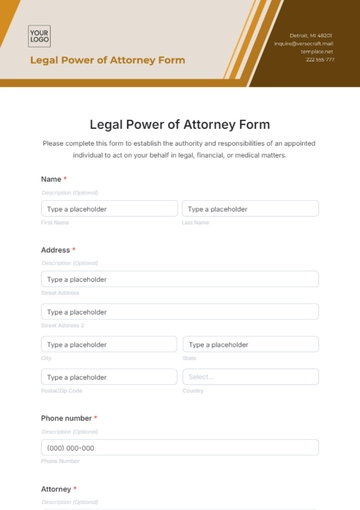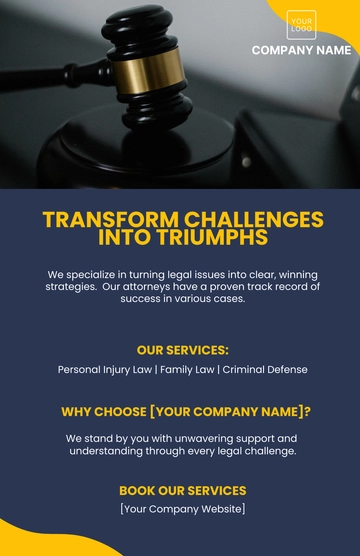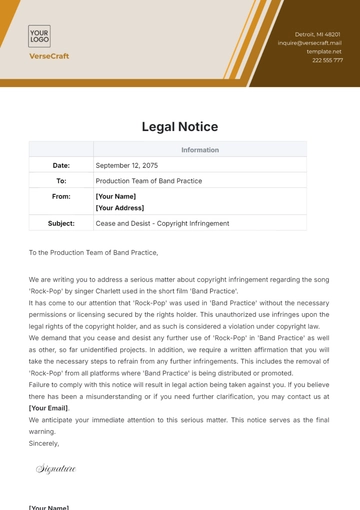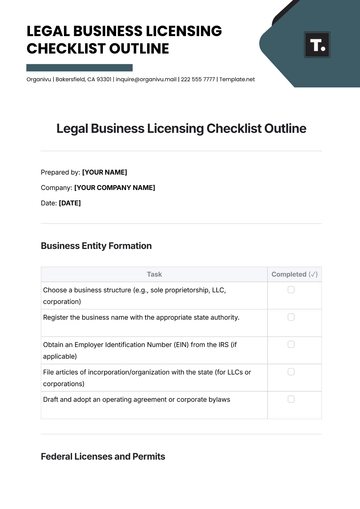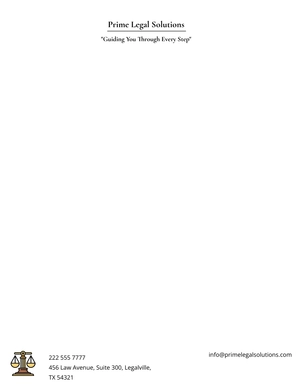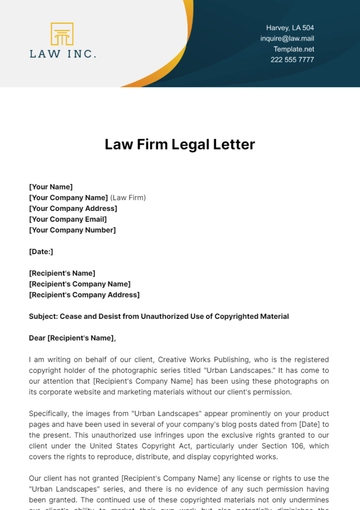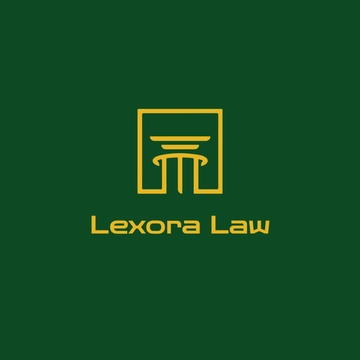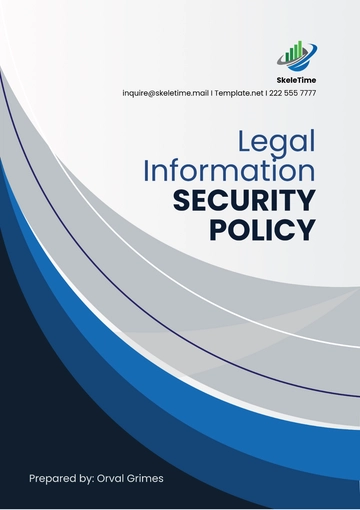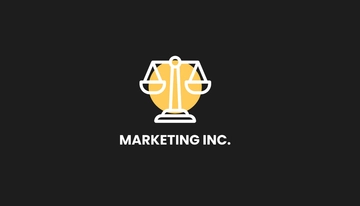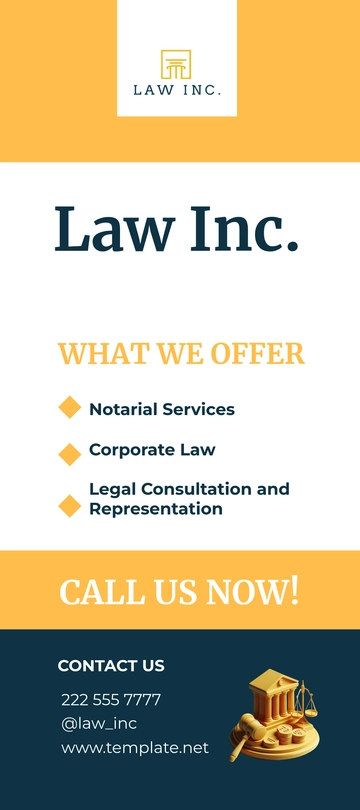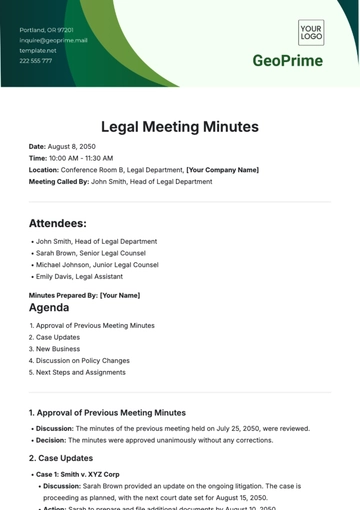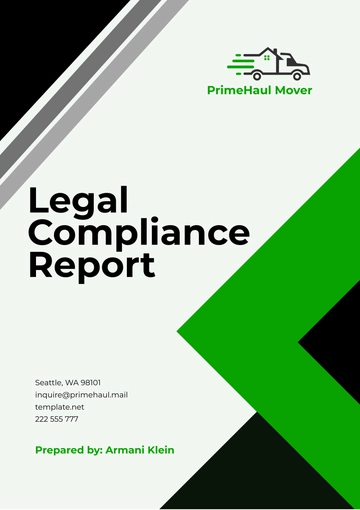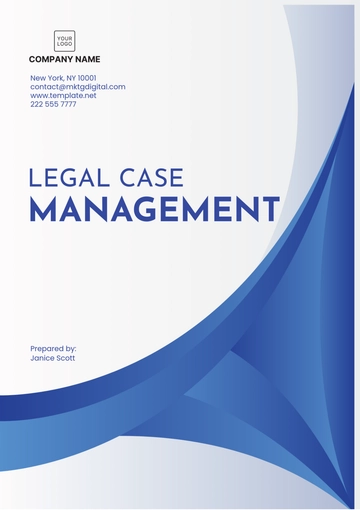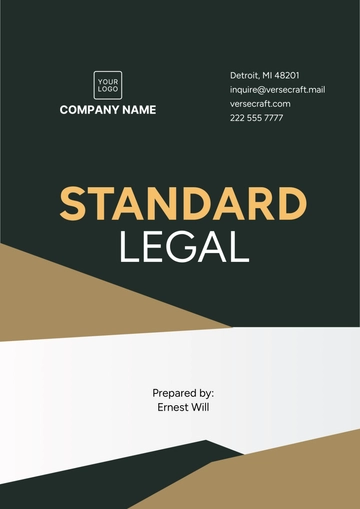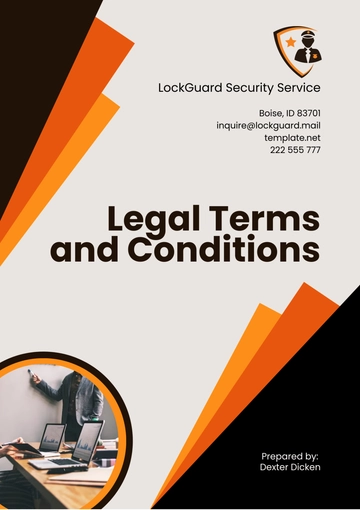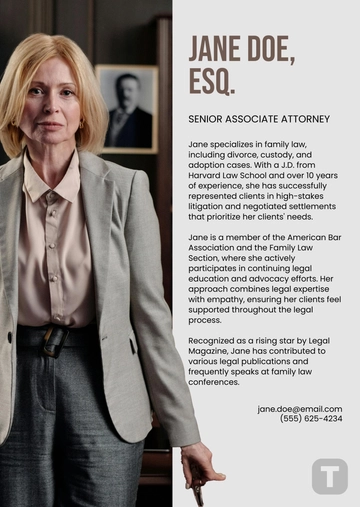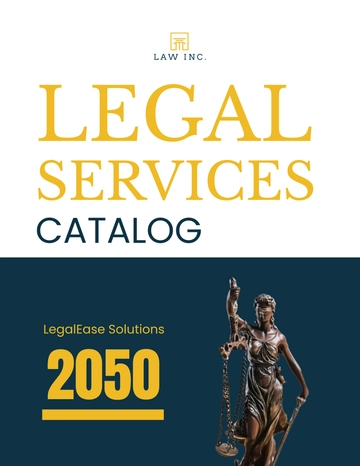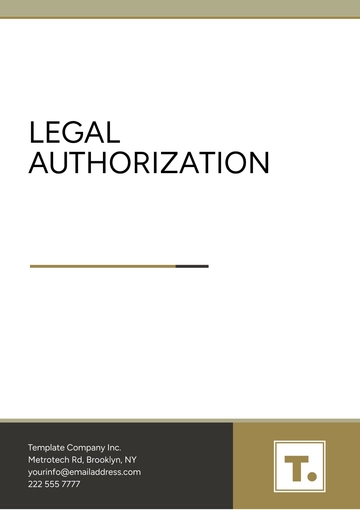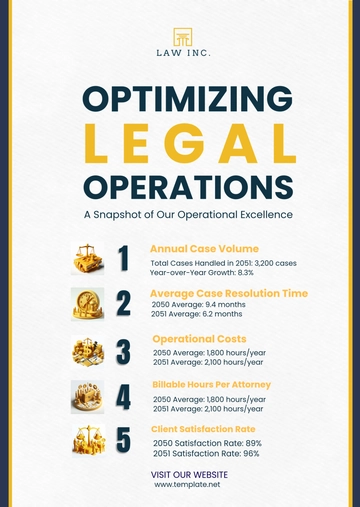Free Legal Corporate Legal Compliance User Guide
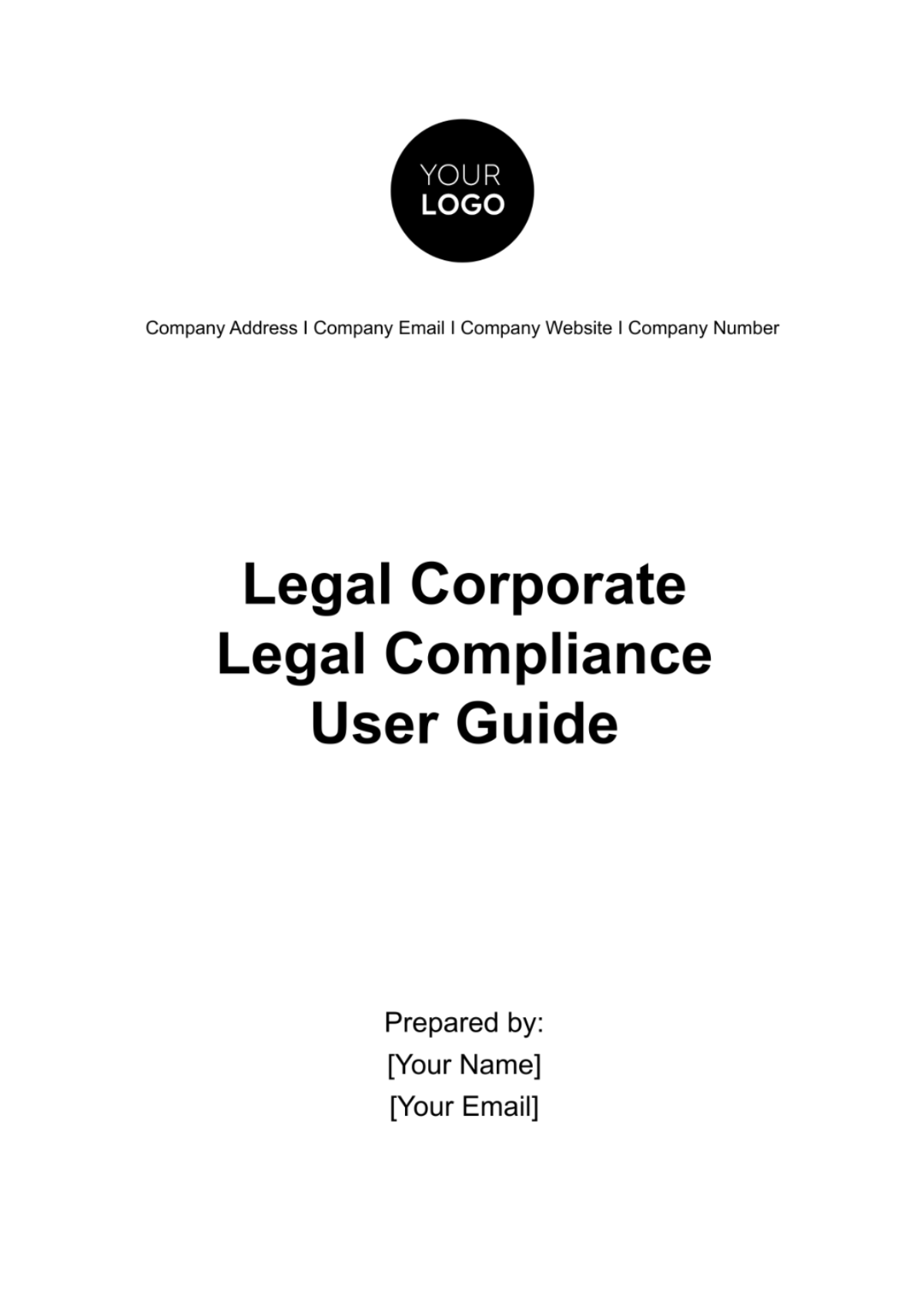
I. Introduction
A. Purpose of the Guide
This Guide is designed to serve as a comprehensive resource for our employees, providing clear instructions and guidelines on how to adhere to legal and regulatory requirements applicable to our operations. Its purpose is to ensure that all members of our organization understand their role in maintaining compliance and are equipped with the knowledge to perform their duties within legal and ethical boundaries.
B. Importance of Legal Compliance
Legal compliance is not merely a regulatory requirement; it is a fundamental component of our organizational integrity and reputation. Adhering to laws and regulations protects us from legal risks, financial penalties, and reputational damage. It also ensures that we conduct our business in a manner that is ethical and respectful to the rights of all stakeholders, including employees, customers, and the communities in which we operate.
C. Overview of Compliance Responsibilities
Compliance is a shared responsibility that requires the active participation of everyone in our organization. Our commitment to compliance involves:
Understanding the legal and regulatory landscape that affects our business operations.
Adhering to policies and procedures designed to ensure compliance.
Reporting any suspected violations of laws, regulations, or company policies.
Participating in compliance training and education programs.
II. Understanding Corporate Compliance
A. Definition and Scope of Corporate Compliance
Corporate compliance involves adhering to laws, regulations, and ethical standards that govern our business activities. It encompasses a wide range of areas, including but not limited to financial practices, employment laws, environmental regulations, and data protection. The scope of corporate compliance extends beyond mere legal conformity, embedding ethical considerations into our decision-making processes and business practices.
B. The Role of Compliance in Corporate Governance
Compliance plays a critical role in corporate governance by ensuring that our business operations are conducted transparently, ethically, and in accordance with legal requirements. It supports our governance structures by providing a framework for risk management, decision-making, and ethical behavior. Through effective compliance, we uphold our fiduciary duties to our stakeholders and protect the long-term sustainability of our organization.
C. Legal Obligations and Ethical Standards
Our legal obligations and ethical standards are the foundation upon which our compliance program is built. We are committed to:
Observing all applicable laws and regulations that affect our business operations.
Upholding principles of fairness, honesty, and integrity in our dealings.
Ensuring that our business practices reflect our commitment to ethical conduct.
Promoting a culture of transparency and accountability.
III. Regulatory Framework
The regulatory framework within which we operate is complex and multifaceted, encompassing a wide range of laws and regulations designed to ensure fair competition, protect consumers, safeguard the environment, and uphold the rights and safety of our employees. Compliance with these regulations is not only a legal requirement but also an integral part of our commitment to ethical business practices. Below, we outline the key areas of this framework and the relevant U.S. laws, providing a brief explanation of each to ensure a comprehensive understanding of our compliance obligations.
A. Antitrust and Competition Laws
Antitrust and competition laws are designed to prevent anti-competitive behavior, protect consumers, and ensure a fair marketplace. We adhere to these laws to foster healthy competition and innovation.
Sherman Antitrust Act: This foundational antitrust law prohibits monopolistic practices and any concerted effort that unreasonably restrains interstate and international commerce. It is the cornerstone of U.S. antitrust policy.
Clayton Act: This act builds on the Sherman Act by prohibiting mergers and acquisitions that may reduce competition, and by banning discriminatory pricing and exclusive dealing contracts that could harm competition.
Federal Trade Commission Act: This act established the Federal Trade Commission (FTC) and outlaws unfair methods of competition and unfair or deceptive acts or practices in commerce. It ensures that businesses compete fairly and honestly.
B. Securities and Financial Regulations
Securities and financial regulations govern the issuance, trading, and oversight of securities to protect investors, ensure market integrity, and facilitate capital formation.
Securities Act of 1933: Often referred to as the "truth in securities" law, it requires that investors receive financial and other significant information concerning securities being offered for public sale, and prohibits deceit, misrepresentations, and other fraud in the sale of securities.
Securities Exchange Act of 1934: This act created the Securities and Exchange Commission (SEC) and governs the trading of securities post-issuance, including the disclosure of important market-related information and the regulation of securities transactions and financial markets.
Sarbanes-Oxley Act of 2002: Enacted in response to financial scandals, this law aims to protect investors by improving the accuracy and reliability of corporate disclosures. It introduced major changes to the regulation of financial practice and corporate governance.
C. Employment and Labor Laws
Employment and labor laws protect the rights of employees and set standards for working conditions, wages, and benefits.
Fair Labor Standards Act (FLSA): This act establishes minimum wage, overtime pay eligibility, recordkeeping, and child labor standards affecting full-time and part-time workers in the private sector and in federal, state, and local governments.
Occupational Safety and Health Act (OSHA): OSHA ensures employees' safety and health in the United States by setting and enforcing standards and by providing training, outreach, education, and assistance.
Family and Medical Leave Act (FMLA): The FMLA provides employees with unpaid, job-protected leave for certain family and medical reasons, ensuring the balance of work and family life through federal law.
D. Environmental Laws
Environmental laws are designed to protect the environment and ensure public health through the regulation of pollutants and environmental hazards.
Clean Air Act (CAA): This act regulates air emissions from stationary and mobile sources to ensure that all Americans have clean air. It sets National Ambient Air Quality Standards to protect public health and the environment.
Clean Water Act (CWA): The CWA establishes the basic structure for regulating discharges of pollutants into the waters of the United States and regulating quality standards for surface waters, with the aim of eliminating pollution.
Resource Conservation and Recovery Act (RCRA): RCRA governs the disposal of solid and hazardous waste, ensuring the safe management and cleanup of solid waste, hazardous waste, and underground storage tanks.
E. Data Protection and Privacy Laws
Data protection and privacy laws regulate how companies collect, use, share, and protect personal information.
Children’s Online Privacy Protection Act (COPPA): COPPA imposes certain requirements on operators of websites or online services directed to children under 13 years of age, and on operators of other websites or online services that have actual knowledge that they are collecting personal information online from a child under 13 years of age.
Health Insurance Portability and Accountability Act (HIPAA): HIPAA provides data privacy and security provisions for safeguarding medical information, significantly affecting how healthcare information is handled across various entities.
California Consumer Privacy Act (CCPA): As a state law that serves as a model for others, CCPA grants California residents new rights regarding their personal information and aims to provide consumers with greater privacy protections.
IV. Corporate Compliance Program
A. Structure of the Compliance Program
Our compliance program is designed to prevent, detect, and respond to compliance risks and violations. It is structured around policies, procedures, and controls that encompass all areas of our operations. Below is a table outlining the key components of our compliance program:
Component | Description |
Policies and Procedures | Formalized standards and guidelines to ensure compliance with laws and regulations. |
Compliance Officer and Committee | Individuals and groups responsible for overseeing the compliance program. |
Training and Education | Programs to educate employees about their compliance responsibilities. |
Monitoring and Auditing | Activities to regularly review and assess compliance with program standards. |
Reporting Mechanisms | Channels for reporting compliance issues or concerns without fear of retaliation. |
Response and Enforcement | Procedures for addressing compliance violations and enforcing policies. |
B. Role of Compliance Officer and Committee
The Compliance Officer, supported by the Compliance Committee, plays a crucial role in guiding, implementing, and overseeing our compliance program. They are responsible for ensuring that compliance policies and procedures are up-to-date, conducting risk assessments, coordinating training programs, investigating compliance issues, and reporting on compliance matters to senior management and the board of directors.
C. Compliance Risk Assessment Process
Identifying and assessing compliance risks are critical steps in our compliance program. This process ensures that we focus our efforts where they are most needed.
Identify Risks: Review operations to pinpoint areas where compliance risks might exist.
Assess Risks: Evaluate the identified risks in terms of their potential impact and the likelihood of occurrence.
Prioritize Risks: Rank risks to focus on the most significant threats to compliance first.
Implement Controls: Develop and put in place measures to mitigate the prioritized risks.
Monitor and Review: Regularly review risk assessments and controls to ensure they remain effective and update them as necessary.
D. Implementing Compliance Policies and Procedures
Our compliance policies and procedures are the backbone of our compliance program, providing clear guidelines for ethical and legal behavior.
Draft Policies: Develop clear, concise policies that address specific compliance areas and risks.
Review and Approve: Have these policies reviewed by legal counsel and approved by senior management to ensure they are comprehensive and enforceable.
Communicate Policies: Distribute policies throughout the organization through various channels and formats to ensure accessibility.
Train Employees: Conduct training sessions to ensure employees understand the policies and how they apply to their roles.
Monitor Compliance: Regularly monitor compliance with policies and procedures and adjust them as necessary to address any shortcomings.
E. Training and Education Programs
Training and education are key to ensuring that employees understand their compliance responsibilities. Below is a table highlighting our training programs:
Program | Frequency | Duration |
General Compliance Training | Annually | 2 hours |
Role-Specific Training | As needed | Varies |
Regulatory Update Sessions | Semi-annually | 1 hour |
Ethical Conduct Workshops | Annually | 1.5 hours |
F. Reporting and Whistleblower Policies
We encourage a culture where employees feel comfortable reporting compliance concerns without fear of retaliation. Our policies outline the processes for confidentially reporting suspected violations and protect whistleblowers from retaliation. These mechanisms are critical for the early detection and resolution of potential compliance issues.
G. Monitoring, Auditing, and Reporting Compliance
Monitoring and auditing are essential for assessing the effectiveness of our compliance program. We conduct regular audits to ensure compliance with laws, regulations, and internal policies. Findings from audits are reported to senior management and the board of directors, along with recommendations for improvement. This ongoing process helps us to continually enhance our compliance efforts and uphold our commitment to ethical and legal business practices.
V. Ethical Conduct and Corporate Culture
A. Promoting an Ethical Corporate Culture
Our commitment to ethical conduct is integral to our corporate culture. We strive to create an environment where integrity, transparency, and accountability are at the core of all business decisions and interactions. Below are guidelines to promote an ethical corporate culture:
Emphasize Integrity: Make integrity a cornerstone of all business practices and decisions.
Foster Open Communication: Encourage open and honest communication among all employees, providing safe channels for voicing concerns and suggestions.
Lead by Example: Ensure that leadership at all levels demonstrates ethical behavior and decision-making in their daily actions.
Recognize Ethical Behavior: Acknowledge and reward employees who exemplify ethical conduct and contribute positively to the corporate culture.
Regularly Review Policies: Continuously assess and update ethics policies and procedures to reflect changing laws, regulations, and ethical standards.
B. Conflict of Interest Policies
Conflicts of interest can undermine trust and integrity. Our policies are designed to identify, mitigate, and avoid conflicts of interest.
Disclose Potential Conflicts: Require employees to disclose any situations that may be perceived as a conflict of interest.
Avoid Conflicts: Instruct employees to avoid situations where personal interests could conflict with the interests of the organization.
Review Disclosures: Establish a process for reviewing disclosed conflicts of interest and determining appropriate actions to mitigate them.
C. Anti-Bribery and Corruption Policies
We are committed to conducting our business free from bribery and corruption. Our policies reflect this commitment:
Prohibit Bribery: Explicitly forbid the offering, giving, receiving, or soliciting of any item of value to influence the actions of an official or other person in charge of a public or legal duty.
Maintain Accurate Records: Ensure that all financial transactions are accurately recorded and transparent, to prevent any form of corruption or bribery.
Conduct Due Diligence: Perform due diligence on partners, suppliers, and third parties to ensure they share our commitment to anti-bribery and anti-corruption.
D. Insider Trading Policies
Insider trading undermines market integrity and violates trust. Our policies are designed to prevent insider trading and ensure fair market practices.
Restrict Trading: Prohibit trading based on material, non-public information about the company or its business partners.
Educate Employees: Provide training on what constitutes insider trading and the legal and ethical implications associated with it.
Monitor Compliance: Implement monitoring systems to detect and prevent potential insider trading activities.
E. Corporate Social Responsibility
Our commitment to corporate social responsibility (CSR) is a reflection of our values and the role we play in the broader community. We believe in operating in a manner that is environmentally sustainable, socially equitable, and economically beneficial to all stakeholders. Through our CSR initiatives, we aim to positively impact our community, environment, and economy, reinforcing our commitment to ethical business practices and long-term sustainability. Our efforts include sustainable resource management, community engagement and development projects, ethical labor practices, and philanthropic endeavors that align with our corporate values and societal expectations.
VI. Managing Compliance Risks
A. Identifying and Assessing Compliance Risks
Effective compliance risk management begins with the identification and assessment of potential risks that could impact our operations. This process helps us prioritize our compliance efforts and allocate resources efficiently.
Conduct Regular Assessments: Periodically review and assess all areas of the business to identify potential compliance risks.
Engage Stakeholders: Involve various stakeholders, including employees, management, and external partners, in the risk identification process to ensure a comprehensive view.
Prioritize Risks: Evaluate the likelihood and potential impact of identified risks to prioritize them accordingly.
Update Risk Profiles: Regularly update risk assessments to reflect changes in our business environment, operations, and regulatory landscape.
B. Implementing Control Measures
Once risks have been identified and assessed, implementing appropriate control measures is crucial to mitigate these risks effectively.
Develop Policies and Procedures: Create or update policies and procedures to address and mitigate identified risks.
Train Employees: Provide targeted training to employees on how to adhere to these policies and procedures effectively.
Establish Monitoring Systems: Implement systems to monitor compliance with the control measures and detect deviations or violations.
Review and Adjust Controls: Regularly review the effectiveness of control measures and make necessary adjustments to ensure continued compliance.
C. Responding to Compliance Violations
A prompt and effective response to compliance violations is critical to maintaining the integrity of our compliance program.
Establish Reporting Channels: Provide clear and accessible channels for reporting suspected compliance violations.
Conduct Thorough Investigations: Promptly investigate reported violations to determine their validity and scope.
Take Appropriate Action: Apply appropriate disciplinary measures or corrective actions based on the findings of the investigation.
Document and Learn: Document the violation and the response to it, and use this information to prevent future violations.
D. Crisis Management and Legal Response Planning
Preparing for and managing compliance-related crises or legal challenges is essential for minimizing their impact on our operations and reputation.
Develop Crisis Management Plans: Create detailed plans for responding to compliance-related crises, including communication strategies and steps to mitigate harm.
Assemble Response Teams: Form specialized teams responsible for managing crises and legal challenges, including legal counsel and public relations experts.
Conduct Simulations: Regularly conduct simulated crisis scenarios to test and refine our response plans and team readiness.
Review and Update Plans: Continuously review and update crisis management and legal response plans to address emerging risks and lessons learned from past incidents.
VII. Compliance in Business Operations
A. Contract Compliance
Ensuring compliance in contractual obligations is crucial for maintaining trust with our partners and avoiding legal liabilities. Contract compliance involves aligning our business practices with the terms and conditions outlined in agreements.
Review Contracts Thoroughly: Ensure that all contracts are reviewed by legal counsel before signing to identify any potential compliance issues.
Train Relevant Employees: Educate employees involved in contract management and execution on compliance requirements related to their roles.
Monitor Fulfillment: Regularly monitor the fulfillment of contractual obligations to ensure ongoing compliance.
Maintain Open Communication: Keep open lines of communication with contract partners to address and resolve compliance issues promptly.
B. Vendor and Third-Party Compliance
Our commitment to compliance extends to our relationships with vendors and third-party service providers. It is essential to ensure that these parties also adhere to relevant laws and regulations.
Conduct Due Diligence: Perform thorough due diligence on vendors and third parties before entering into agreements to assess their compliance practices.
Include Compliance Clauses: Incorporate compliance clauses in contracts with vendors and third parties, requiring them to adhere to applicable laws and regulations.
Provide Training and Resources: Offer compliance training and resources to vendors and third parties, if necessary, to ensure they understand their compliance obligations.
Regularly Review Relationships: Periodically review and assess vendor and third-party compliance to ensure ongoing adherence to legal and regulatory requirements.
C. Mergers, Acquisitions, and Divestitures Compliance
Compliance plays a critical role in the success of mergers, acquisitions, and divestitures. These processes require thorough due diligence, careful integration planning, and vigilant monitoring to ensure compliance with all relevant laws and regulations.
Mergers and Acquisitions: During mergers and acquisitions, conducting a comprehensive compliance due diligence is essential to identify any legal or regulatory issues that may affect the transaction or the future operations of the combined entity. This includes evaluating the target's compliance program, past violations, and ongoing legal disputes. Post-merger, integrating compliance programs and ensuring that the new entity adheres to all applicable laws and standards is crucial for a seamless transition.
Divestitures: In divestitures, ensuring that the divested business complies with all relevant laws and regulations up to the point of sale is crucial. This involves preparing the divested entity for operational independence, including establishing its own compliance framework if necessary. It's important to clearly define the responsibilities of each party regarding compliance matters during the transition period.
D. Record-Keeping and Documentation
Effective record-keeping and documentation are foundational to a robust compliance program, ensuring that we can demonstrate adherence to laws and regulations.
Maintain Accurate Records: Keep detailed and accurate records of all business transactions, compliance efforts, and decision-making processes.
Implement a Document Management System: Use a document management system to organize, store, and secure all compliance-related documents.
Adhere to Retention Policies: Follow strict document retention policies, keeping records for the minimum period required by law or regulation, which is often at least seven years.
Regularly Review and Dispose: Regularly review documents to dispose of those no longer needed for legal or operational reasons, in accordance with our document retention policy.
Ensure Access Controls: Limit access to sensitive documents to authorized personnel only, protecting confidentiality and integrity.
- 100% Customizable, free editor
- Access 1 Million+ Templates, photo’s & graphics
- Download or share as a template
- Click and replace photos, graphics, text, backgrounds
- Resize, crop, AI write & more
- Access advanced editor
The Legal Corporate Legal Compliance User Guide Template from Template.net is a comprehensive tool designed to guide businesses through the complexities of compliance. This template is both editable and customizable, making it perfect for tailoring to specific corporate needs. Editable in our AI Editor tool, it offers a clear, step-by-step approach to ensuring legal obligations are met efficiently and effectively.
